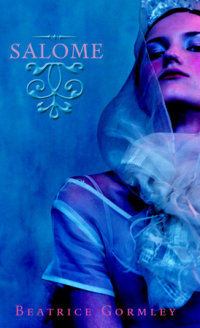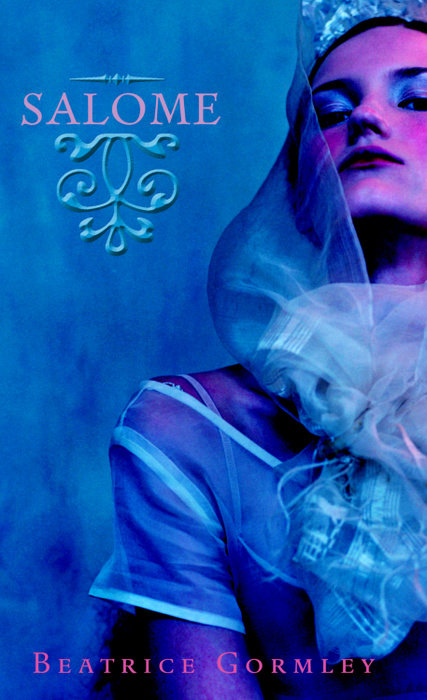ONE
UNCLE ANTIPAS
Ordinarily, upper-class Roman girls didn’t dance. Dancers were lower-class entertainers, sluts. But it was entirely proper for well-bred girls to dance in the rites at the Temple of Diana. Diana, goddess of the moon and of the hunt, was also the protector of young girls. So, many well-to-do families sent their daughters for lessons at the Temple. There we received training in deportment (which is what our mothers cared about) and got to run around with other girls (which is what we cared about).
We Herods weren’t actually Roman, of course: we were Jews from Judea. But like other wealthy foreigners in Rome—no matter whether they were from Ephesus in Anatolia, Cyrene in Africa, or Gadis in Spain—we lived an upper-class Roman life. There were many Jews of lesser birth in Rome, but for the most part they kept to themselves in the Jewish quarter of the city. Their women hardly went out at all.
By the time I was twelve, I looked forward even more than before to my lessons at the Temple of Diana.
ONE
UNCLE ANTIPAS
Ordinarily, upper-class Roman girls didn’t dance. Dancers were lower-class entertainers, sluts. But it was entirely proper for well-bred girls to dance in the rites at the Temple of Diana. Diana, goddess of the moon and of the hunt, was also the protector of young girls. So, many well-to-do families sent their daughters for lessons at the Temple. There we received training in deportment (which is what our mothers cared about) and got to run around with other girls (which is what we cared about).
We Herods weren’t actually Roman, of course: we were Jews from Judea. But like other wealthy foreigners in Rome—no matter whether they were from Ephesus in Anatolia, Cyrene in Africa, or Gadis in Spain—we lived an upper-class Roman life. There were many Jews of lesser birth in Rome, but for the most part they kept to themselves in the Jewish quarter of the city. Their women hardly went out at all.
By the time I was twelve, I looked forward even more than before to my lessons at the Temple of Diana. I’d been enrolled at the Temple for years, and I’d always liked the training, especially learning the sacred songs and dances. The priestess was strict but kind to all the girls, and there was a peaceful sense of order in the Temple grounds.
Now I grew quickly, and soon I was tall for my age. My size made me feel awkward, and I had to struggle to make my hands and feet do what they were supposed to. Herodias joked that I would cross a room in order to find the one loose floor tile and stumble over it.
Since I felt so clumsy, I was grateful that I could dance as well as ever. Even with my new self-consciousness, I could still move gracefully when the pipes and tambourines started up. The music seemed to guide my body for me. I danced well even on festival days, when all the mothers came to the Temple to watch us take part in the rites.
One afternoon in November when I was just fourteen, I hurried home from the Temple, accompanied as usual by Gundi. I was glowing with pride. Today the priestess had taken me aside and spoken to me. She’d been watching my progress, and she wondered if I might have a calling to become a priestess.
“I am going to recommend that you try for a sign from Diana this spring,” she said. “One night during a full moon, you will sleep in the Temple at the feet of the great statue. If the goddess chooses you to serve her, she will give some sign.” She would talk to my mother about it and consult the auspices for a favorable date.
I was flattered, although I hadn’t thought of joining the cult. I knew that my mother’s only purpose in sending me to the Temple of Diana was to help me gain poise and a proper sense of my role as a woman of noble birth. Herodias liked to celebrate all kinds of holidays, but otherwise she wasn’t very devout to any deities, including the Jewish god.
At home I brushed past the doorkeeper, eager to tell Herodias how the priestess had complimented me. Then I stopped short, seeing the atrium full of men. Most of them were dressed in Eastern robes, although a few husky fellows wore uniforms—short tunics and capes and leather breastplates. These guards were throwing dice. The other men talked among themselves, except for a young man in a long Greek-style tunic and draped cloak. Leaning against a pillar, he was absorbed in reading a scroll.
“What’s all this?” muttered Gundi. She took me by the elbow to hurry me away from the eyes of so many strange men. I supposed they must be the attendants of someone visiting my father. But my father was usually out, in the Forum, at this hour.
Pausing in the doorway to the garden, I saw Herodias sitting by the fountain. It was a pleasantly warm day, although the afternoons were short this time of year. There was a table beside her with wine and cakes.
“Salome, there you are,” said Herodias. “Come greet your uncle Antipas.” On a bench facing my mother, his back to me, sat a man in an embroidered robe.
I hadn’t seen Antipas (actually Herodias’s uncle and my great-uncle) for years. That time, he’d been visiting Rome with one of his half brothers, Philip of Gaulanitis. But I remembered his powerful neck and shoulders. Herod Antipas, ruler of Galilee and Perea on the eastern side of the Empire. Like my father, Herod Junior, Antipas was one of the many sons of the late King Herod the Great of Judea. It seemed these two half brothers were on speaking terms for the moment—you never could tell with the Herods.
I came into the garden and stood beside Herodias. Antipas’s iron gray hair was short in the Roman style, and his trimmed beard set off a rather delicate mouth. I said politely, “Welcome to Rome and to our house, Great-Uncle.” I hoped he wouldn’t be staying with us.
Taking a sip from his goblet, Antipas looked me over. He remarked to my mother, “She’s grown, hasn’t she? Salome doesn’t look much like you, except for her big brown eyes.”
Uncomfortable, I turned my big brown eyes aside to the mosaic on the fountain wall. It pictured a maenad, an attendant of the god Dionysus, whirling in an ecstatic dance.
Herodias patted my arm. “Yes, she reminds me of a calf—a dear sweet calf.”
They went on with their conversation, mainly Herodias listening with rapt attention while Antipas talked. He had a deep, rich voice, and it grew warmer as he described Galilee. Herodias knew Jerusalem in Judea from her girlhood, but she’d hardly ever been to Galilee.
Antipas had hired a Roman city planner and built himself a beautiful capital city, named Tiberias in honor of the Emperor. This new city, on a slope above a lake (renamed Lake Tiberias in honor of the Emperor), was gifted with all the best features of Rome: a forum, a theater, a stadium. The public baths were especially luxurious, because of the natural hot springs.
And the palace! Antipas made a sweeping gesture, in- dicating a building grander than we could imagine. (I noticed how small his hands were in contrast with his thick body.) Whitest marble, the palace was, its roof covered with gold leaf.
Herodias seemed entranced with all these details. She kept her long-lashed dark eyes fixed on this half brother of her husband. Meanwhile, I watched her. Herodias was a slim, sleek woman, younger-seeming than her thirty-four years. I’d always thought she was beautiful, but I’d never seen a man gaze at her the way Antipas was doing. Antipas and Herodias almost seemed to be alone together. In a charmed circle.
As Antipas talked on about his building program for Tiberias, I fidgeted with the waist cord of my stola. My mother turned to me as if she’d forgotten I was standing there. “You may go, Salome dear.” Antipas’s eyes rested on me again for a moment.
His look made my insides tighten, and I forgot how to move. I swear the table with the wine pitcher was not in my way when I came into the garden, but somehow I bumped against it as I turned to leave. Herodias caught the pitcher before it fell off the table and broke, but the red liquid splashed over the tiles.
A maid rushed to mop up the spilled wine. Herodias joked to Antipas, “Didn’t I say Salome was like a calf?” Somehow I got out of the garden, my face burning.

